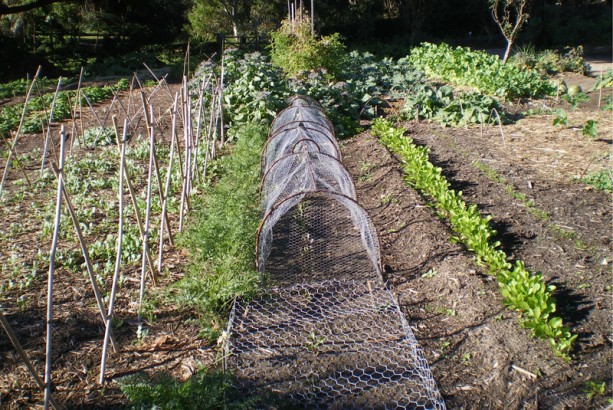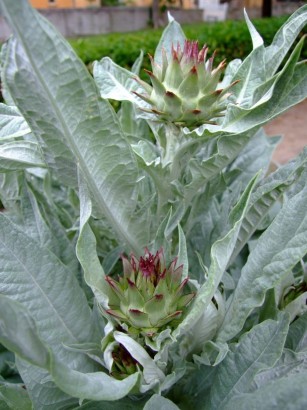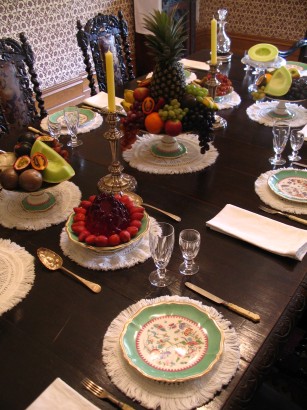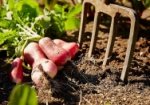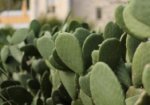The kitchen garden at Vaucluse House is a magnet for visitors. Starting on the sunny hillside, west of the house, fresh seasonal ingredients can be traced from the garden to storage in the larder, dairy and cellars, then to the kitchen where the cook prepared the family’s – and servants’ – meals, to the dining room and, ultimately, to the scullery – where the maids dealt with the inevitable washing up.
The first gardens at Vaucluse were created by Sir Henry Browne Hayes, the eccentric Irish knight and convict who bought and first named the property. After 1827 these were expanded by William and Sarah Wentworth, both of whom had a keen interest in horticulture. By the 1840s the estate boasted a large productive kitchen garden, while an orchard and vineyard stretched north towards where the car park is located today. By 1862, during the family’s second trip to England, these gardens began their slow decline, and by 1867 Sarah was sending instructions to their tenants Thomasine [nee Wentworth] and Thomas Fisher to use the garden only for their own domestic needs. By the 1880s the kitchen garden had shrunk in size considerably, and by 1900 it was largely abandoned.
In 1999 the HHT decided to recreate part of the Wentworths’ kitchen garden. Providing a contrast to the elegant ‘pleasure garden’, whose layout had miraculously survived in front of the house, this recreation would highlight the vital role such productive gardens played in colonial life. It would also help flesh out the patterns of daily life at the estate when it was home to William and Sarah and their ten children.
But how do you go about re-creating a kitchen garden that has been lost for well over a century? Although we didn’t have any drawings or photographs, evidence for the original layout came for a wide range of sources: An 1848 painting by Jacob Janssen that shows the distinctive rectangular garden beds peeking out from the woodland of the valley sides, an 1884 survey that defined estate fence lines, and 1930s aerial photographs that still indicated areas of past cultivation. While the one thing we didn’t use was ‘geophys’ – the ground penetrating ‘radar’ techniques that are now a staple of TV history documentaries – an archaeological survey did find evidence of post holes, trenches, paths and even indications of tree holes.
Investigations also revealed a system of direct cart tracks that had once linked the garden with the kitchen court and stables. These were reinstated, together with a connecting bridge over the creek. Piece by piece the day-to-day functioning of the estate became clearer. The garden was then planted out using traditional techniques, based on documentation of other colonial kitchen gardens and on published early 19th century garden handbooks.
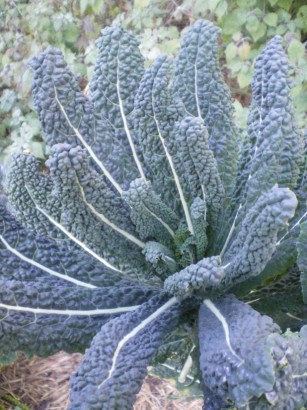
Cavolo nero kale. Photo Scott Hill © HHT
The plants were chosen from references both in family and other colonial documents to reflect the broad output of a typical kitchen garden in 1850s Sydney. These plants were used for a range of purposes, including: animal fodder, servants’ food, the Wentworths’ own table, for preserving and for sale. Other produce like guava and loquats reflect the status attached to exotic plants, and the kudos attached to a well-stocked table.
Many named varieties proved impossible to trace while other ‘heirloom seeds’ were acquired in both Australia and Britain. Some personal favourites are the scarlet runner beans, stately thistle-like cardoons, ‘Turks turban’ squash, curly kale and ‘French breakfast’ radishes. In Wentworth documents there are numerous mentions of fruits, including melons – a particular favourite of William Charles Wentworth – being grown. Among them is the enigmatic ‘black pine melon’ – possibly not a melon at all but a variety of pineapple. Letters record particular successes with peaches, apples, pears and jam melons – which Jacqui will be talking about in her upcoming melon post. The Moorpark apricots grown at Vaucluse House were known for their quality and other produce won William and Sarah prizes at floral and horticultural shows.
Over a decade later, discoveries in the garden keep happening: apart from countless fragments of plates and bottles, recent excavations for a garden shed revealed a floor of slurry on crushed sandstone. This is evidence of a structure at the rear of the garden that appears on the 1884 survey, which may have been used for tools, storing apples, or even as accommodation for gardeners. The new shed was built around these remains, which are preserved beneath its sand floor.
